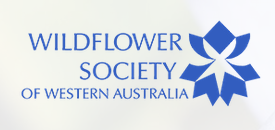Many people assume that fungi are plants, however this really isn’t correct. Fungi are actually more closely related to animals than they are to plants, but either way fungi are very different from both plants and animals and are classified into their own biological kingdom. The kingdom Fungi covers a variety of multicellular organism including moulds, yeast and what we traditionally mean when we refer to fungi; mushrooms and toadstools. The actual biodiversity of the fungi kingdom is still greatly unknown, it is estimated that there are 1.5 million to 5 million fungi species worldwide but only 5 – 10% of these have been formally classified and interestingly, in Australia there are more types of fungi than there are plants. The scientific study of fungi is called mycology and the word mycology very roughly translates to the science of mushrooms.
So how do fungi differ from plants and animals? Fungi are both genetically and physically similar and dissimilar to plants and animals. Like animal cells, fungi cells lack chloroplasts (in plant cells this is where photosynthesis occurs) and are heterotrophic, meaning that they can’t produce their own food (unlike plants) – that they have to obtain food from other organisms. Like plants, fungi cells have cell walls and vacuoles, but unlike plants their cell walls do not contain cellulose and instead contain chitin, which is also found in arthropod (e.g. insects and crustaceans) exoskeletons.
Most fungi grow as hyphae, which are thread like structures that can be 2 – 10 µm thick and several centimetres in length. The individual hyphae of a fungus form a network called a mycelium – this is the ‘vegetative part’ of the fungus – which remains in the organic matter of the ground throughout the year. As this part of the fungus is usually hidden under the ground or in the leaf litter, we don’t normally see it; we only see the fruiting bodies which are the mushrooms or toadstools.
As I mentioned before, like animals, fungus can’t produce its own food and needs to obtain it from other organisms. Unlike animals, fungus cannot simply swallow food; instead it has to use its hyphae. The hyphae secrete enzymes from the tips and these enzymes break down the organic matter which is then absorbed through the hyphae walls. As the mycelium of the fungus uses up available food resources, it grows outward in search of more food while the inner mycelium, where the food has been exhausted, dies off. This means that rather than growing in a circular pattern, mycelium grows in a ring pattern and as a result of this, the fruiting bodies appear to grow in a ring which we commonly call a ‘fairy ring’.
The fruiting body is just as important as the mycelium. Its role is to produce and disperse spores from which new fungi can develop. In the diagram below, you can see that the fruiting body is made up of a number of parts. The spores are the reproducing body and these are produced on the hymenium (gills) which are on the underside of the pileus (cap). The stipe (stem/stalk) of the mushroom or toadstool raises the cap above the ground for unobstructed spore release.

Image taken from http://www.toxinology.com/fusebox.cfm?staticaction=poisonous_mushrooms/mushrooms_idfile1.htm
Here in the southwest, the fruiting bodies of fungi can appear at any time of the year, however there are two distinct fruiting periods. The first is from February to April, when mushrooms and toadstools start appearing in parks, lawns and gardens. The second fruiting period is mid-May to late July with a peak during mid-June to July; this is when the bushland fungi produce mushrooms and toadstools.
This means that right now is the best time to see bushland fungi. Fungi identification can be a bit tricky; however there are a couple of good books and websites you can use to help you, below is a list of these resources:
- Young, A.M. (2004). A Field Guide to the Fungi of Australia.
- Negus, P. (2006) The Magical World of Fungi
- http://www.fungiperth.org.au
- http://www.fungiperth.org.au/Fieldbook-all/Perth-Fungi-Field-Book.html
- http://www.anbg.gov.au/fungi/
Sources:







